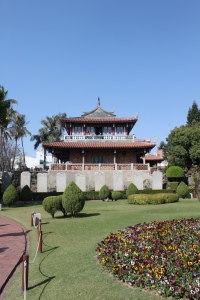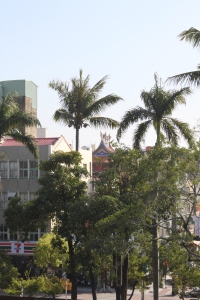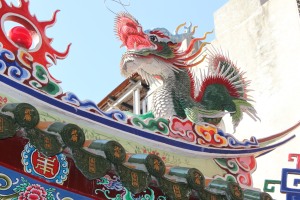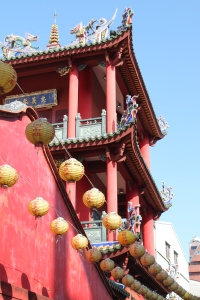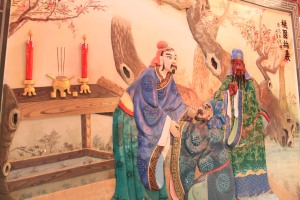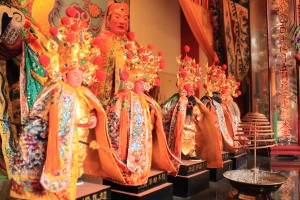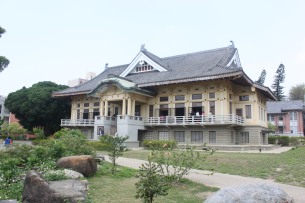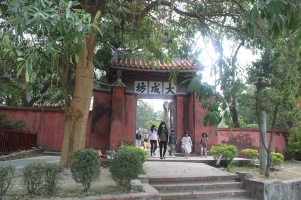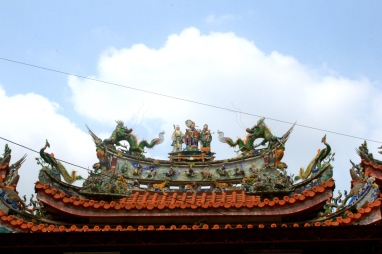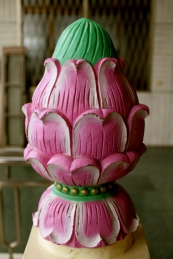From the highest point of the Chikan Towers I stopped to marvel at the contrasting views before me. Below is the perfectly preemed Chikan Lou gardens where every leaf on every tree and bush is cut and placed with impeccable taste and imaculate precision to preserve a feeling of honour and dignity in the now over three hundred year old Fort. Ahead unfortunately, is the less attractive site of scaffolding wrapped around tall concrete buildings and a slightly neglected, peeling billboard that probably hasn’t served its purpose in months. Then I notice further back, hidden behind two buildings is a beautiful, deep red rooftop and realise that I had spotted Tainan’s God Of War temple and so I tell the others and we head through the back streets to get a closer look. However, it is only after stopping and trying one bite of everything on a little old Taiwanese ladies noodle shop menu and washing it down with bubble tea that we arrive at the temple.
From the outside you can see the full stretch of the deep red left wall which is often recognised by tourists and visitors when mentioning the temple as it is rare to be able to see the full side of any Taoist temples. Many temples are very similar and follow a generic layout design but this one inparticular has a number of distinct features such as the left wall which makes it that little bit more special and memorable.
Built in 1665 the temple is heading towards 400 years old and has a mighty 300 year old plum tree in the back courtyard that has aged with it. Originally it was the deity Guan Di who was solely worshipped here and that is why sometimes if you talk to locals about the temple or try to do some research you may find calling it by its other name ‘DaGuanDi temple’ will get you a bit further. Guan Di is the patron saint of soldiers and is widely worshipped in both Taoism and Buddhism which means you will most likely be able to recognise his image from the hundreds of paintings and statues of him all around Asia. – Hard to miss, he’s the one with the bright red face and long black beard often holding a pole with a blade on the end (this is a traditional Chinese weapon known as a Guan Do).
However, the temple also has yet another name. It is also known as the Sacrificial Rites Martial Temple due to regular rituals that were performed there by Official Government members in the 1700’s. These sacrificial rituals were performed to honour general Guan Di’s ancestors on the 13th of May every year and often repeated again in the Autumn season. During the occupation years, the Japanese government held the rites to hold two out of three rituals performed a year.
The temple’s layout is unique in that it is not symmetrical. The back of the temple stretches out far to the left and does not extend at all into Yongfu road on the right which is what a traditional layout would do. The unforgettable bare red wall which can be seen from this road is special in itself but also serves as a huge contrast to the decorative interior of the temple, making it that more spectacular when you venture inside.

